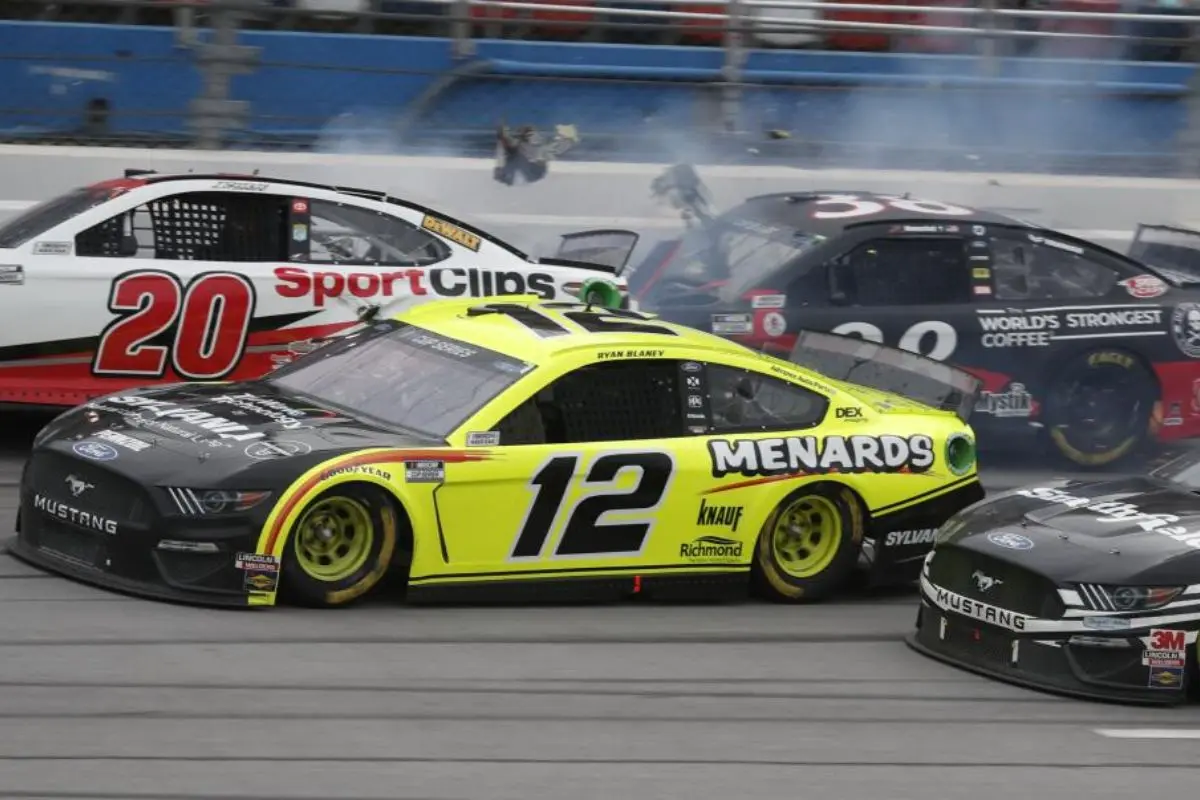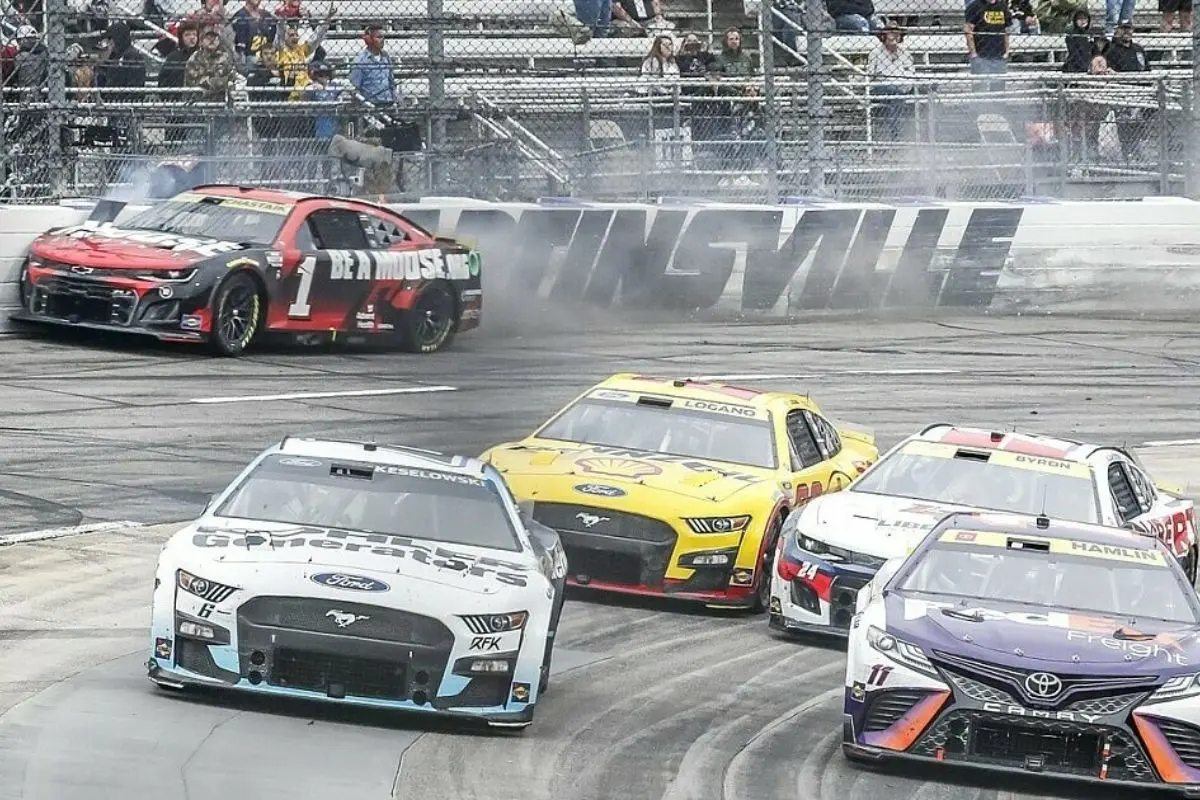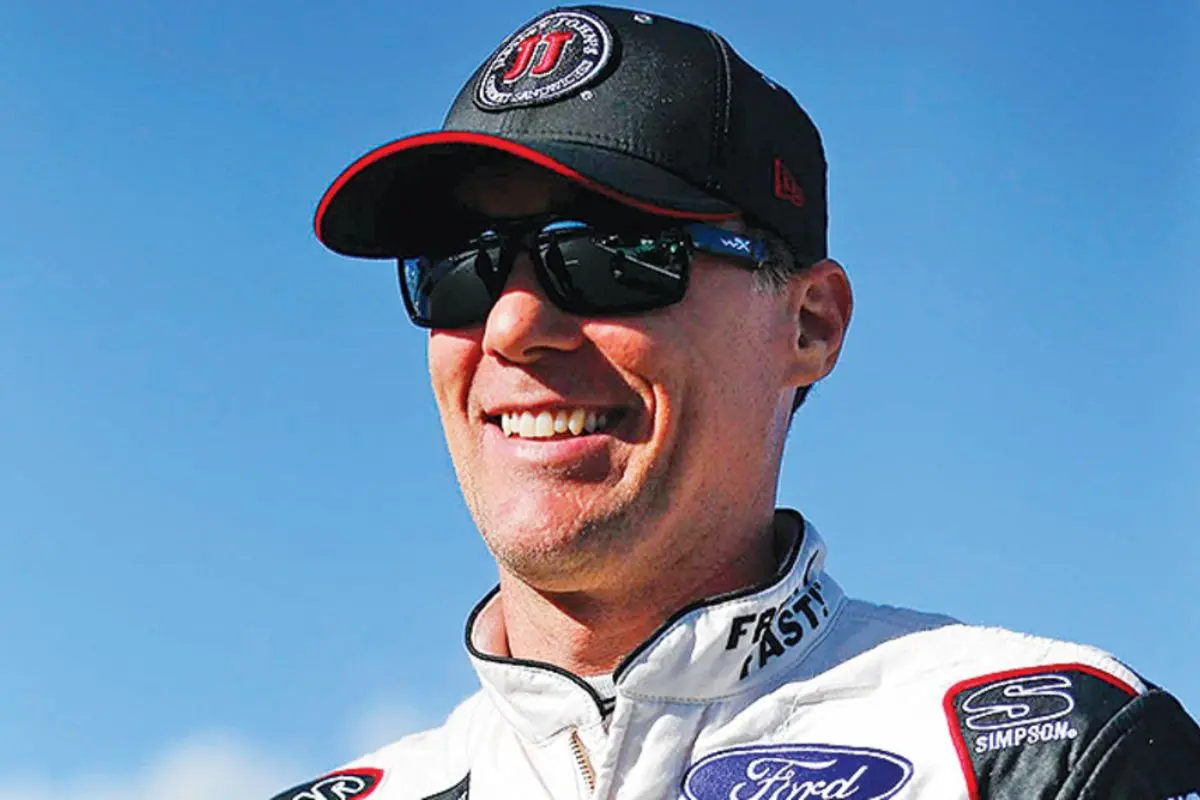In 2002, the Bristol track turned into a battleground, showing Kevin Harvick‘s fiery brawl with Greg Biffle—a clash that NASCAR fans would never forget. The short, sharp turns at Bristol are known to stir up intense emotions, but this encounter went way beyond racing. What sparked this heated exchange? And how did it lead to one of NASCAR’s most unforgettable fights? This intense rivalry, marked by raw anger and costly consequences, cast a shadow over both drivers’ careers.
Key Highlights
- The 2002 NASCAR Xfinity race at Bristol spotlighted a fierce rivalry between Kevin Harvick and Greg Biffle, culminating in a physical confrontation.
- Tensions escalated ahead of the NASCAR race, fueled by Harvick’s frustration over an earlier crash and Biffle’s competitive nature.
- Harvick’s impulsive decision to confront Biffle exposed the unchecked emotions that often erupt in NASCAR’s environment.
- Biffle’s NASCAR crew had to step in to defuse the clash, highlighting the challenges of managing conflicts and tensions that frequently arise within the sport.
- This incident brought NASCAR’s sportsmanship standards into question, highlighting issues of accountability and the effect of anger on a driver’s career and championship goals.
A Dramatic Clash at Bristol
Although the NASCAR Xfinity race at Bristol in 2002 was intended to show skill and strategy, it instead became a notorious flashpoint in the careers of Kevin Harvick and Greg Biffle. The environment of Bristol, known for its tight turns and short track, often breeds tension among competitors, and this race was no exception.
The friction between Harvick and Biffle escalated dramatically, culminating in an altercation that would overshadow the race itself. As the event unfolded, Harvick’s aggressive driving style collided with Biffle’s similarly combative approach, igniting a rivalry that would dominate discussions in the NASCAR community.
Following a contentious exchange on the track, tempers flared, leading to a physical confrontation that exemplified the raw emotions often inherent in motorsport. The clash between the two drivers, though briefly attention-grabbing, ultimately cast a shadow on sportsmanship and highlighted troubling limits to competitive spirit.
In the aftermath, Harvick bluntly addressed the incident on SiriusXM NASCAR Radio, underscoring the intense pressures and relentless expectations that come with racing at such a high-profile venue. His candid commentary revealed the depth of frustration that can bubble to the surface in high-stakes situations, offering insight into the psychological toll on drivers.
This clash at Bristol not only marked a pivotal moment for both competitors but also served as a reminder of the thin line between rivalry and respect in the world of NASCAR, where every race can alter the course of a career.
Anticipation and Build-Up
In the days leading up to the fateful clash at Bristol, an undercurrent of tension brewed between Kevin Harvick and Greg Biffle, setting the stage for a confrontation that would electrify the NASCAR community. The narrative of rivalry had been simmering, with both drivers harboring frustrations that were seemingly poised to erupt.
As the race weekend approached, the atmosphere thickened with anticipation; fans and pundits alike speculated on the potential for fireworks.
In the aftermath of an earlier crash, Harvick’s demeanor transformed as he stood by his pit box, exuding a noticeable intensity. He described his own uncertainty—“I don’t think even I knew that I was going to hurtle a car.” His admission reflects a deeper psychological struggle, where emotions oscillate between control and chaos.
“Well I can tell you that everybody didn’t know what I was going to do. While I was sitting on that pit box or standing on that pit box like I was, because I don’t think even I knew that I was going to hurtle a car. I’m p***ed, I’m sitting up on that pit box and I don’t know why, but when you’re 25, you feel like have to make a scene.” – Kevin Harvick
The nature of NASCAR is woven with passion, and Harvick’s frustration was emblematic of the pressures faced by elite competitors.
NASCAR Fans, keen observers of the sport’s intricate dynamics, sensed the brewing storm. The inevitability of conflict loomed large, as Harvick’s simmering anger and Biffle’s own competitive spirit created a perfect storm.
The notion of making a scene resonated deeply within Harvick, intertwining with the ethos of racing where aggression often dictates the narrative. Ultimately, this build-up of tension was not merely a prelude to a brawl; it was a manifestation of racing’s volatile nature, where rivalries are forged and identities are tested on the asphalt of Bristol.
Kevin Harvick’s First Instincts
In the chaos of the moment, Kevin Harvick‘s instinctive reaction was raw and unfiltered; he felt an overwhelming urge to leap from the pit wall and grab Greg Biffle by the collar. This visceral response highlights the intense emotions often present in high-stakes racing environments, where adrenaline can blur the lines between reason and impulse. Harvick’s admission highlights a tendency to confront perceived aggression directly, a trait that is often prevalent in the competitive world of sports.
However, the subsequent uncertainty of what to do once Biffle was within his grasp showcases a critical aspect of human behavior during conflict. Harvick candidly confessed that he had no plan beyond the initial act of confrontation. This moment captures the unpredictable nature of such clashes, where instinct overrides tactical thinking.
The chaotic scene, described by Harvick as resembling a “mosh pit,” further illustrates the tumultuous atmosphere, demonstrating how quickly tensions can escalate.
Intervention from Biffle’s Crew
As tensions flared on pit road, Biffle’s crew had to step in to contain a situation that was on the verge of boiling over.. The environment of NASCAR often breeds fierce rivalries, and the confrontation between Kevin Harvick and Greg Biffle exemplified the sport’s intense emotions. As the altercation unfolded, it became clear that immediate action was required to prevent further escalation.
Fortunately, a formidable member of Biffle’s pit crew—a remarkably large individual—stepped in at a critical moment. By seizing Harvick by the collar and physically dragging him away from the scene, this crew member not only showed physical strength but also an acute awareness of the need for intervention. Such decisive action was imperative, as emotions were running high and the situation had the potential to spiral out of control.
Where we dropping boys?
Kevin Harvick at Bristol in 2002: pic.twitter.com/E4w6VYvWm1
— FOX: NASCAR (@NASCARONFOX) September 15, 2020
The presence of this crew member illustrated the unsung heroes of the pit crew, whose roles extend beyond mechanical support to encompass conflict resolution and team stability. This incident serves as a reminder of the importance of a cohesive crew in high-pressure scenarios.
The ability to manage not only the mechanical aspects of the race but also the interpersonal dynamics is critical for maintaining team integrity. As tensions simmered and emotions flared, the intervention from Biffle’s crew showcased a level of professionalism and teamwork that is significant within the fiercely competitive landscape of NASCAR.
Reflections on the Incident
The aftermath of the incident between Kevin Harvick and Greg Biffle reveals a complex interplay of emotions and consequences that extend beyond the immediate confrontation. While the spectacle of their brawl may have delighted fans, suggesting an authentic display of passion in the sport, it also emphasized the unstable balance between entertainment and professionalism in NASCAR.
Harvick himself recognized the mixed reactions, admitting that fans relished the drama, yet the repercussions within his team were far less favorable. The reprimand he received from his crew highlighted the importance of maintaining composure, especially in a sport where every action can ripple through the season.
This incident serves as a crucial learning moment for Harvick, who now finds himself in pursuit of the 2020 NASCAR Championship. The heated confrontation had the potential to derail his focus and performance, serving as a stark reminder of the intensity and pressure within the sport.
In recognizing the need to temper his emotions, Harvick is faced with the challenge of channeling his competitive spirit constructively. The incident raises broader questions about the culture of NASCAR, where aggressive instincts can lead to both exciting moments and considerable consequences.

News in Brief: Kevin Harvick’s Fiery Brawl With Greg Biffle
The altercation between Kevin Harvick and Greg Biffle at Bristol exemplifies the volatile nature of competitive motorsports, where emotions often overshadow rational decision-making. This incident, characterized by impulsive reactions and external intervention, highlights the complexities of driver interactions and the pressures inherent in high-stakes racing environments.
Ultimately, the brawl serves as a poignant reminder of the fine line between passion and recklessness, prompting a reevaluation of conflict management strategies within the sport.
ALSO READ: Ross Chastain on Deliberately Wrecking Kevin Harvick and the Regret That Haunts Him


